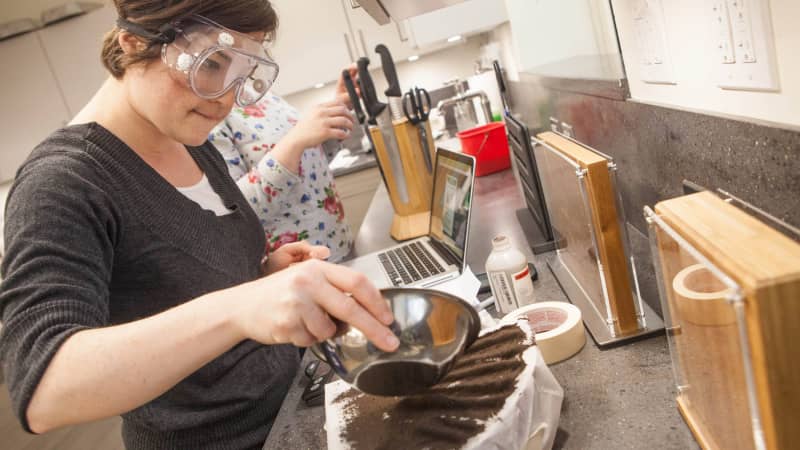Test Kitchen à La Carte Knife Set
Equipment Review
We tested 10 universal knife blocks priced from about $25 to just under $250, using them to hold our winning and Best Buy à la carte knife sets, each featuring a chef’s knife, serrated knife, paring knife, slicing knife, boning knife, and shears.
Published Nov. 1, 2016. Appears in America's Test Kitchen TV Season 21: A Trip to Vietnam

Knife blocks allow you to store your knives without mounting a magnetic strip on your kitchen wall or taking up valuable drawer space with an organizer. Because conventional blocks hold only knives of specific sizes (the small slot for the paring knife, the deep slot for the slicer, etc.), we prefer universal blocks, which are designed to accommodate knives of all sizes in any configuration. There are two types of universal knife blocks: those that use magnets to secure the knives and those that use a mass of bristles or folds or an open grid to hold them. To find the best universal knife block on the market, we tested 10 models priced from about $25 to just under $250, using them to hold both our winning and Best Buy six-piece à la carte knife sets (which both include a pair of shears).
What did we find out? While nonmagnetic models were generally cheaper, they were less durable: Plastic bristles shed and bent out of shape, plastic folds got nicked easily, and the wooden grid chipped with extended use. Worse, nonmagnetic models were often smaller and less safe, crowding the knives together and/or leaving larger portions of their blades sticking out.
We preferred magnetic models, which generally exposed less of the blades and held the knives more securely—usually in a side-by-side configuration that made it less likely that the knives would scrape against each other and dull or scratch the blades. We liked blocks with magnets that were just strong enough to hold a heavy cleaver without letting it slip but not so strong that we struggled to remove it. To learn more about the magnets in each block, we used iron filings to locate and measure them. Magnet type, size, shape, or number didn’t seem to matter, but magnet coverage did: Blocks with large gaps between their magnets had less usable space overall and forced us to find the magnetic hot spots in order to secure the knives.
Stability was a final and important concern. We preferred heavier blocks with wide bases lined with rubbery nonslip material, features that helped keep the blocks from tipping over when we removed knives or bumped the blocks. Too light—or too narrow—and the blocks became dangerously top-heavy when loaded with knives.
At just under $250, our winning block, the 360 Knife Block by Design Trifecta, is a serious investment, but it will serve your knives well for years to come. It weighs almost 14 pounds, ensuring that it will never budge from your counter. It’s roomy, sturdy, and durable, surviving extensive testing with nary a scratch. With excellent magnet coverage, it was easy to attach and remove knives—a rotating, lazy Susan–esque base allowed for q...

The mission of America’s Test Kitchen Reviews is to find the best equipment and ingredients for the home cook through rigorous, hands-on testing. We stand behind our winners so much that we even put our seal of approval on them.

Miye is a senior editor for ATK Reviews. She covers booze, blades, and gadgets of questionable value.

This is a members' feature.